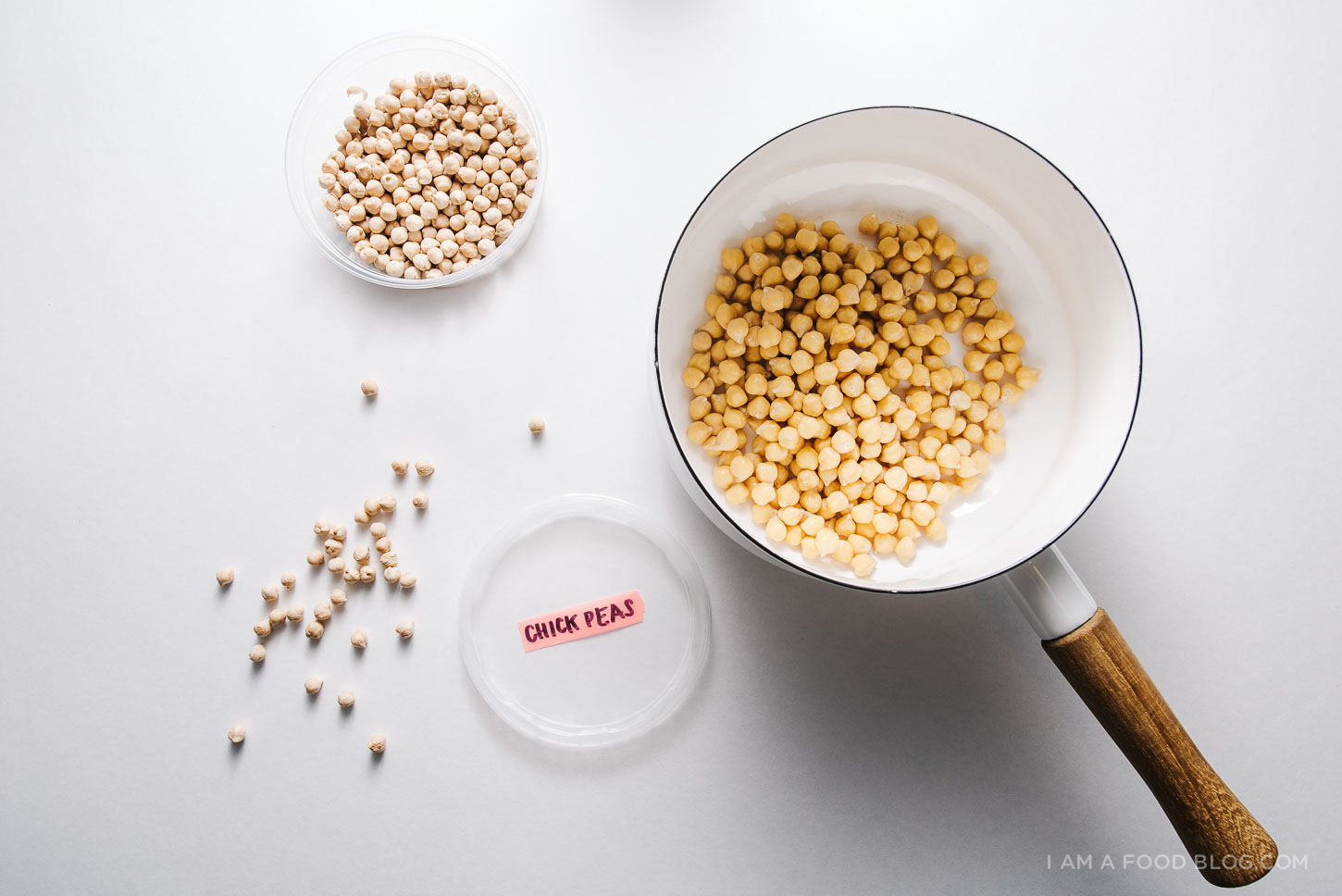
Yesterday was Vacuum V(W)endsdays, the day that I try to vacuum the house. I don’t always end up vacuuming on Wednesdays but I find it helps to have a dedicated day because otherwise who knows how long it might be between vacuum sessions. Mike and I actually had a whole conversation about the whole frequency of vacuuming thing. Now I pretty much vacuum once a week, at a minimum, but I used to just vacuum whenever it felt “dirty.”
So tell me friends, how often do you vacuum? I’m convinced that most people do it once a week and Mike thinks it’s an every-two-weeks sort of thing. Be honest, because inquiring minds want to know! I’m actually kind of obsessed with vacuuming and vacuums. I have two, one for a light vacuum and one for a more deeper clean. And, I also have a vacuum crush, which is kind of silly, but it happens to be the cutest vacuum of all time.
Anyway, vacuuming has nothing to do with this post, which is actually about miso hummus with crispy onion furikake! Hummus is definitely a goto for me. I have it as a snack and sometimes, I’ll just eat hummus and call it a meal. Why not: chickpeas are high in protein and fiber and low in fat. And they happen to be mega affordable too. To me, it’s amazing that you can take something like dried chickpeas and make the most creamy, smooth, addictive dip.
It’s been cold and blustery here and hummus is probably not what you’re craving right now, but hummus reminds me of summertime patio vibes, the sun gently warming my back, a frosty glass in hand, and crunchy crispy things to use a shovel for sunshiny, savory hummus. If you haven’t made hummus before, you should definitely give it a go because you’ll feel like an absolute kitchen genius. This hummus whips up like a dream.
Speaking of dreamy things, the UN has declared 2016 the International Year of Pulses. Pulses, in case you didn’t know, are all the lovely edible seeds of plants in the legume family. Pulses include things like: chickpeas, lentils, dried peas, and beans and they totally fit into my idea of what dreamy food is. I have a thing for texture, and the texture of properly cooked pulses is one of the things that I absolute love. Pulses are definitely a staple in my pantry (right now I have adzuki beans, chickpeas, split peas, great Northern beans, and mung bean threads) and as part of the International Year of Pulses I hope you take the Pulse Pledge with me!
PS – I couldn’t resist topping this hummus with some crispy onion furikake, but it’s completely optional; I think it tastes just as good without.
PPS – I’ve got my eye on these two fun pulse recipes floating around right now: warm chickpea salad and creamy French lentils.
White Miso Hummus adapted from Bon Appetit
makes 2 cups
This particular hummus is super smooth and seasoned with one of my favorite ingredients, white miso. Umami forward miso gives this hummus a deep richness which is offset by lemon. I swapped out traditional tahini for Chinese sesame paste, which adds even more depth of flavor due to the fact that tahini is made with un-toasted sesame seeds and Chinese sesame paste is made with toasted. The result is a ultra-nutty, yet fluffy hummus, totally the hummus dreams are made of.
- 1/2 cup dried chickpeas
- 1 teaspoon baking soda, divided
- 2 garlic cloves, unpeeled
- 2 tablespoons plus 2 teaspoons fresh lemon juice, or to taste
- 1/3 cup Chinese sesame paste
- 1/4 – 1/3 cup shiro (white miso)
- 2 tablespoons ice cold water
- 1/8 teaspoon ground cumin
- olive oil or toasted sesame oil (to serving)
- crispy onion furikake, to serve (optional)
Place chickpeas and 1/2 teaspoon baking soda in a medium bowl and add cold water to cover by 2 inches. Cover and let sit, at room temperature overnight, until chickpeas have doubled in size. Drain and rinse.
In a large saucepan, combine the soaked chickpeas and remaining 1/2 teaspoon baking soda and add cold water to cover by at least 2 inches. Bring to a boil, skimming if needed. Reduce the heat to medium-low, partially cover, and simmer until chickpeas are tender and squish easily between your fingers, about 45–60 minutes. Drain and set aside.
While the chickpeas are cooking, place the garlic, lemon juice, sesame paste, and miso in a blender or food processor and pulse until smooth. With the motor running, Add the ice water, 1 tablespoon at a time (it may seize up at first) until mixture is very smooth, pale, and thick. Add the drained chickpeas and cumin and process, scraping down the sides as needed, until very smooth, about 4 minutes. Thin with water if a looser consistency is needed. Taste and season with lemon juice, and cumin, as desired. Because you’re topping with furikake, resist the desire to over season with salt or extra miso.
Scoop hummus into a shallow bowl and drizzle liberally with olive or toasted sesame oil. Top with a sprinkling of furikake. Enjoy with lots of crispy things to scoop up, or just with a spoon.
Crispy Onion Furikake
makes about 1/4 cup
- 1 tablespoon white sesame seeds
- 1 tablespoon black sesame seeds
- 2 tablespoons crispy fried onions or shallots
- 2 tablespoons bonito flakes
- 1 tablespoon crushed toasted nori
- 1 teaspoon sugar of choice (I used superfine)
- 1 teaspoon smoked sea salt
Mix all of the ingredients together. Use as a finishing salt/seasoning. Sprinkle onto hummus or other things that need a bit of jazzing up.








i refuse to make that crispy onion furikake. i have a feeling once i start, i’m never going to be able to stop (crispy onions and bonito sound heavenly together~).
I love the taste of sesame seeds, especially when they are toasted. I had no idea there was a paste made from them – Amazon here I come. Hummus is so delicious, yet I confess to never having made my own. I will change that! Thank you for a fab post , remove we Vacuum daily – as we have a golden retriever! I also have 2 vacuum cleaners!! Sammie
I need to vacuum more often…definitely not getting done once a week here. More like once every time we’re about to get visitors. :’) The hummus looks lovely. On my to-make list for 2016!
The apartment where my husband and I live right now is all hardwood floors with one big carpet that we vacuum every time that someone is scheduled to come over.
But in 5 weeks we are moving to a home that is nearly completely carpeted!! Once a week sounds reasonable to me…
I have been looking for a Furikake recipe for the past couple of weeks, and this just looks perfect. YUM!
My wife is kind of obsessed with vacuuming too. She does it twice a week, I don’t know why. And I love homemade hummus. I love that you put sesame paste in your hummus recipe, I think it makes the hummus taste nuttier and, in my book, yummier.
YUM! this sounds amazing! and i’m an advocate of vacuuming at least 1x per week, unless my dog is extra shed-y. :)
Now I’m curious what your vacuum crush is! :)
My mom got me a roomba a few years ago and it totally changed my life. I let roomba do a lap around my apartment every other day and then give myself a pat on the back because I “cleaned”.
I am in love with this! Do you think it would be okay to use canned chickpeas? They are a staple for me, so I have a ton in my cupboard. Also, I love the furikake topping, I just bought a jar and have been putting it on everything. I put it on popcorn last night, so good. :)
LOLed at Vacuum V(W)endesday. We vacuum every other week. I decided I can only do one thing per weekend – clean the house, or do laundry – so I switch off. I’d to make both those things weekly, but right now it feels like too much.
I’m also loving the Pulses lately. I’m starting to eat a more vegetarian diet and really love the texture and flavors that beans can add in place of meat. Those creamy French lentils look amazing.